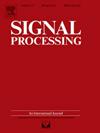基于集成信号子空间投影小波的HRRP去噪与识别
IF 3.4
2区 工程技术
Q2 ENGINEERING, ELECTRICAL & ELECTRONIC
引用次数: 0
摘要
基于HRRP识别非合作目标是一项关键而具有挑战性的任务。为了提高HRRP在低信噪比(SNR)恶劣环境下的识别性能,我们创新性地提出了一种结合域知识和时频多分辨率分析的噪声鲁棒模型,即集成信号子空间投影小波启发网络(SSPWave)。它将细粒度深度去噪模型和一般识别模型级联。首先,我们尝试将离散小波变换(DWT)整合到深度去噪模型中,系统地逐层去除噪声对应的高频分量,同时在降采样过程中保留包含目标主体结构的低频分量。其次,为了重建上采样过程中所需的高频细节,我们提出了信号子空间投影(SSP)模块。值得注意的是,SSP引入了先前估计的信噪比,并通过自适应子空间投影促进波形保存。SSPWave在信噪比引导下实现了噪声抑制和细节保留之间的平衡,展示了在解决各种hrrp噪声水平方面的灵活性和有效性。我们在两个测量的HRRP数据集上评估了该模型,该模型在几个评估指标上表现出了先进的识别鲁棒性。最重要的是,领域知识辅助和时频多分辨率分析是HRRP去噪和识别任务的有效策略。本文章由计算机程序翻译,如有差异,请以英文原文为准。
SSPWave: Integrated signal subspace projection wavelet-inspired network for HRRP denoising and recognition
Identifying non-cooperative targets based on HRRP is a critical and challenging task. To enhance HRRP recognition performance in harsh environments characterized by low signal-to-noise ratios (SNR), we innovatively proposed a noise-robust model that combines domain knowledge and time-frequency multi-resolution analysis, namely integrated signal subspace projection wavelet-inspired network (SSPWave). It cascades a fine-grained deep denoising model and a general recognition model. First, we attempt to integrate discrete wavelet transform (DWT) into the deep denoising model, systematically removing the high-frequency components corresponding to the noise layer by layer, while retaining the low-frequency components containing the main structure of the target on down-sampling process. Second, to reconstruct the high-frequency details required during up-sampling, we propose a signal subspace projection (SSP) module. Notably, SSP introduces the estimated SNR as prior, and facilitates waveform preservation through adaptive subspace projection. SSPWave achieves a balance between noise suppression and detail preservation with SNR-guided, demonstrating the flexibility and effectiveness in addressing various noise levels of HRRPs. We evaluated the model on two measured HRRP datasets, which exhibited advanced recognition robustness on several evaluation metrics. Most importantly, domain knowledge assistance and time-frequency multi-resolution analysis are validated as effective strategies for HRRP denoising and recognition tasks.
求助全文
通过发布文献求助,成功后即可免费获取论文全文。
去求助
来源期刊

Signal Processing
工程技术-工程:电子与电气
CiteScore
9.20
自引率
9.10%
发文量
309
审稿时长
41 days
期刊介绍:
Signal Processing incorporates all aspects of the theory and practice of signal processing. It features original research work, tutorial and review articles, and accounts of practical developments. It is intended for a rapid dissemination of knowledge and experience to engineers and scientists working in the research, development or practical application of signal processing.
Subject areas covered by the journal include: Signal Theory; Stochastic Processes; Detection and Estimation; Spectral Analysis; Filtering; Signal Processing Systems; Software Developments; Image Processing; Pattern Recognition; Optical Signal Processing; Digital Signal Processing; Multi-dimensional Signal Processing; Communication Signal Processing; Biomedical Signal Processing; Geophysical and Astrophysical Signal Processing; Earth Resources Signal Processing; Acoustic and Vibration Signal Processing; Data Processing; Remote Sensing; Signal Processing Technology; Radar Signal Processing; Sonar Signal Processing; Industrial Applications; New Applications.
 求助内容:
求助内容: 应助结果提醒方式:
应助结果提醒方式:


